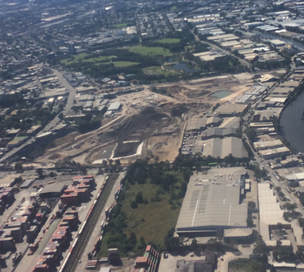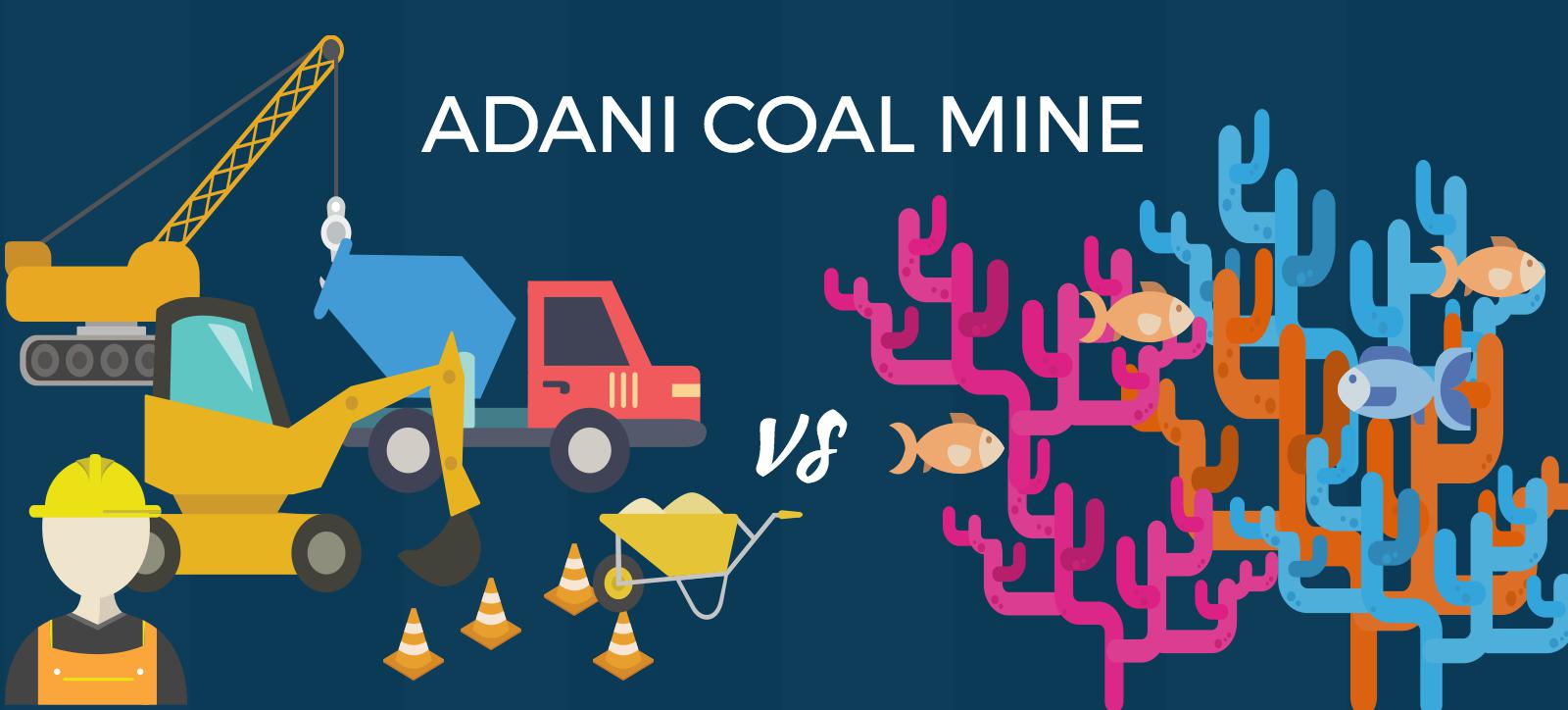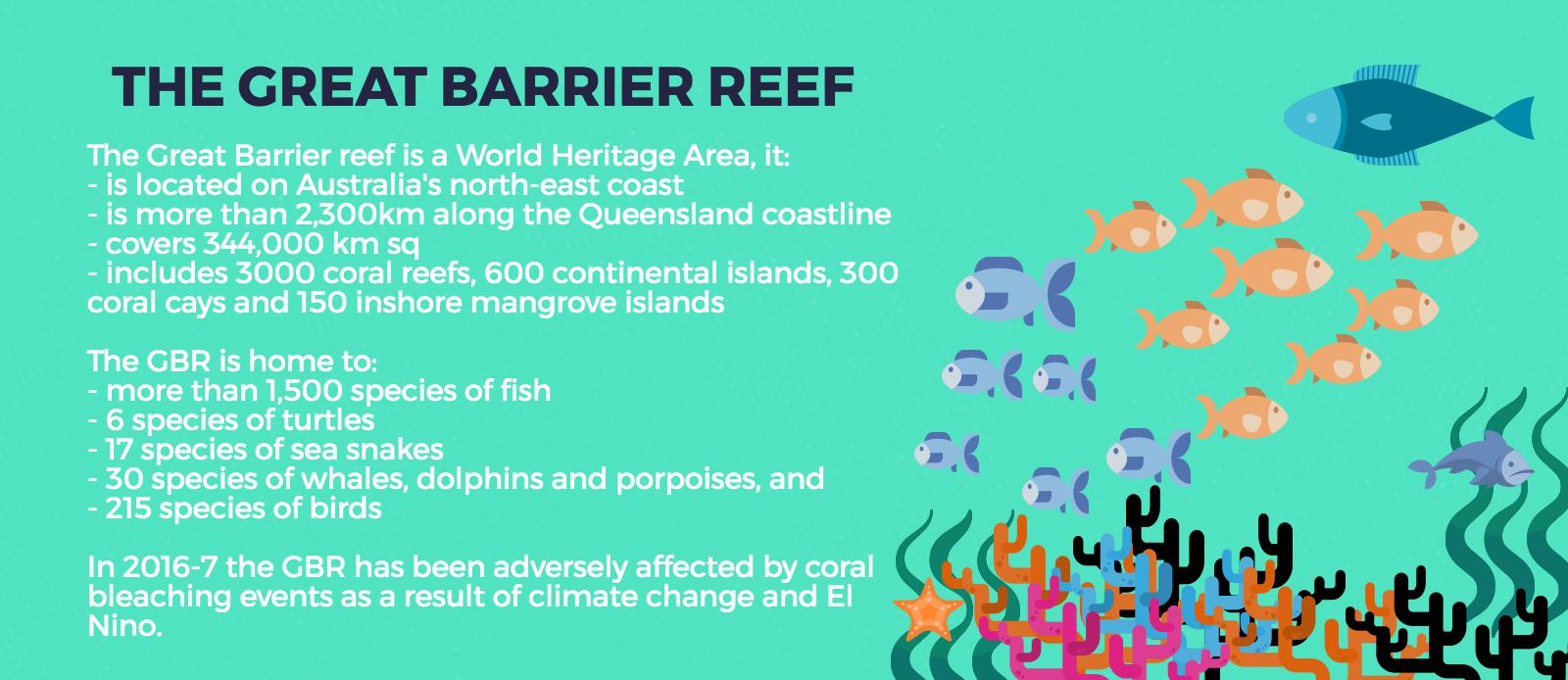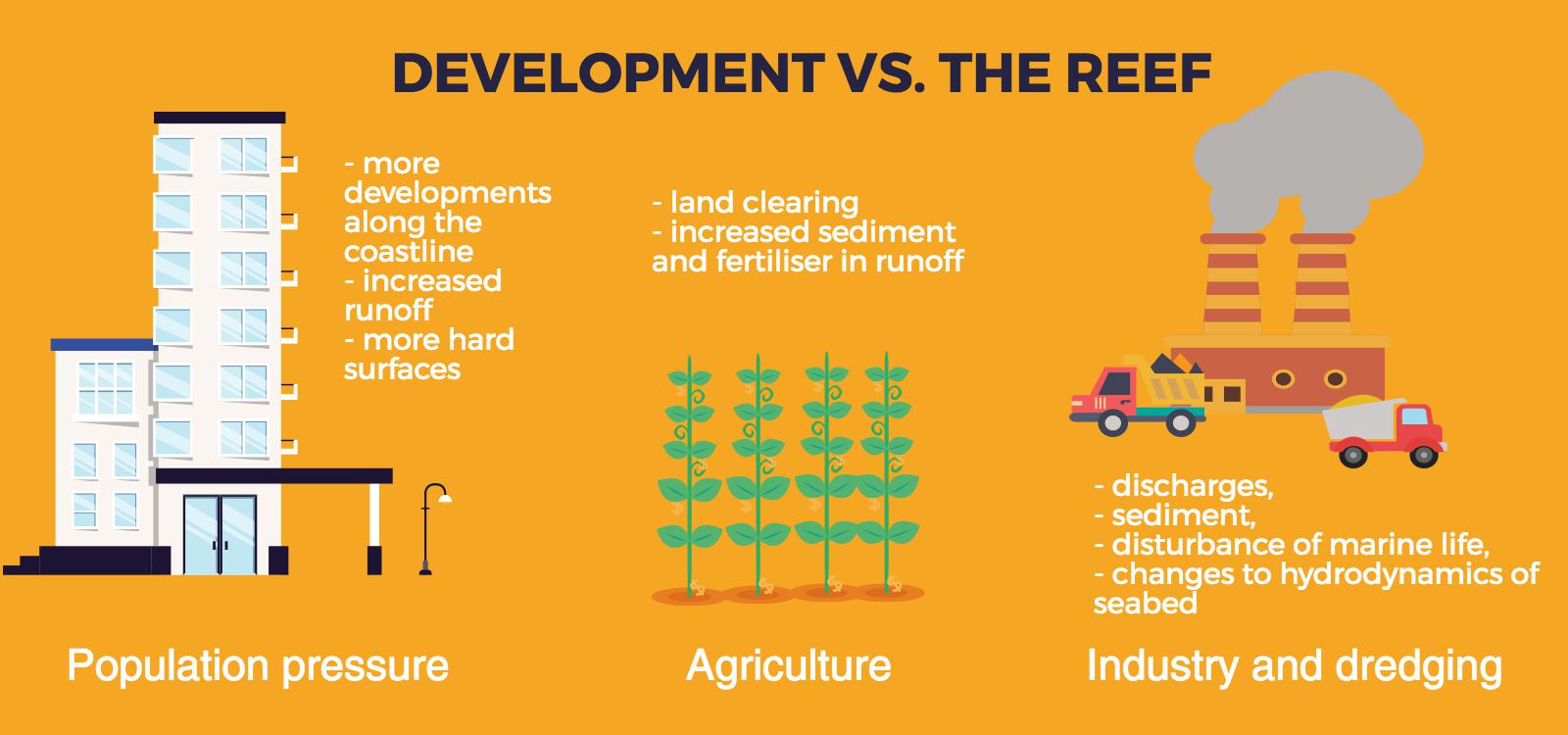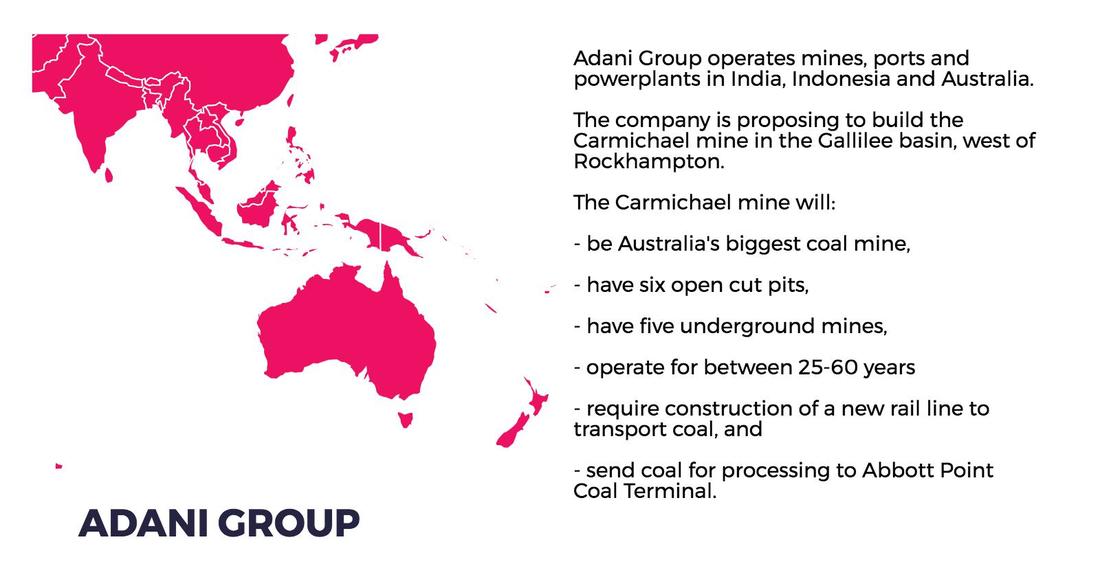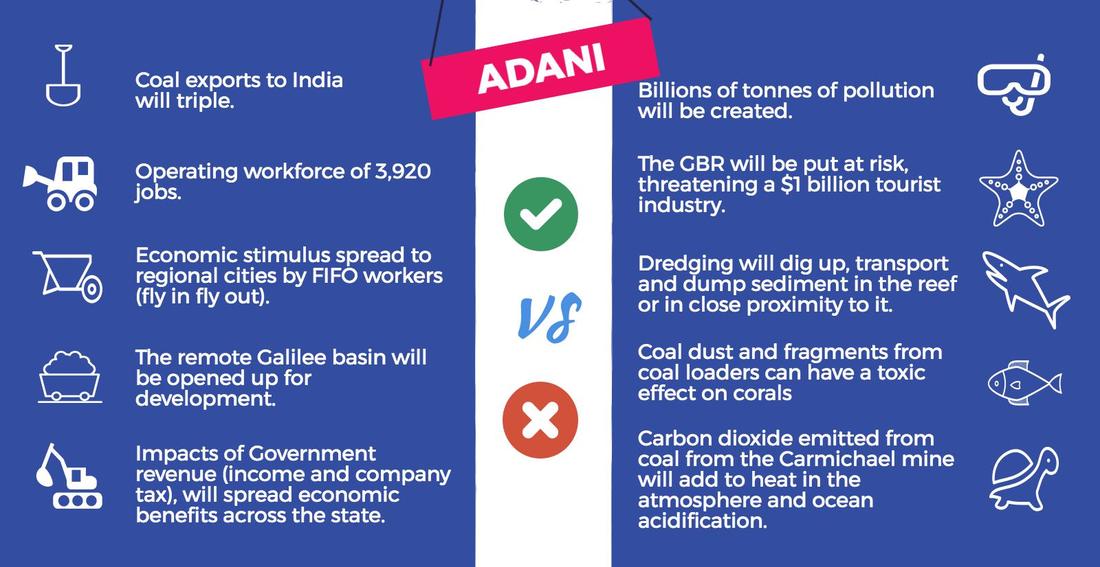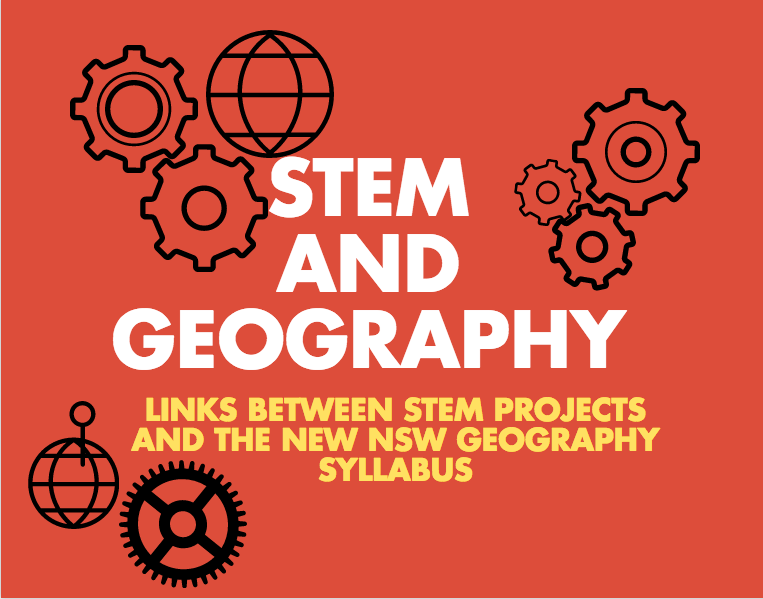|
Dates for consultation on the new draft syllabus for Senior Geography have recently been announced. To find about about the dates click to see the Geography and Geography Life Skills Stage 6 Draft Syllabus Consultation page.
There are several documents worth reviewing prior to consultation sessions: - The Geography and Geography Life Skills Stage 6 syllabus review (released 2018) - Geography and Geography Life Skills Stage 6 Draft Directions for Syllabus Development (released for the consultation period July-September 2018) - Feedback from GTANSW and ACT Draft Directions At this stage four different options for course structure have been provided by NESA for review and consultation. The new syllabus draft that will be released just prior to the consultation meetings (22 July) is likely to be based on one of these models. Preliminary course All Preliminary options provided included a topic on The Nature of Geography, a Geographical Investigation and a Global Transformations topic. This last topic may be drawn from the Australian Curriculum and can be found at the Australian Curriculum (Global Transformations) page. Two of the proposed course structure options included Natural and Ecological Hazards, likely drawn from the Australian Curriculum (Natural and Ecological Hazards) topic. One option included Biophysical Interactions, likely drawn from the existing Stage 6 syllabus. One option includes a topic Physical Environments and Natural Hazards, possibly a melding of the existing Biophysical Interactions topic and the Australian Curriculum Natural and Ecological Hazards. HSC course Sustainable Places looks certain to be included in the HSC course, being in each of the 4 proposed options. This is one of the Australian Curriculum topics and the national version of the topic can be found on the Australian Curriculum (Sustainable Places) site. The Ecosystems at Risk topic has been retained in all four options, but in Option 4 to a lesser extent. Until the draft syllabus is released we won't know how much of the actual topic is likely to be changed or retained. Population Change is a topic in two of the proposed course structure options. The topics Human and Ecological Change, People and Economic Integration and Landcover transformation are each found in one option. It is possible that these will draw on the Australian curriculum topic Australian Curriculum (Landcover Transformation), or the existing People and Economy Activity topic. Overview - What we know so far... Preliminary course 3 topics and an investigation: - Nature of Geography - Global Transformations - One topic still to be announced - possibly some combination of Biophysical Interactions and Ecological Hazards or one or the other. - Geographical Investigation HSC course 3 (possibly 4) topics: - Sustainable Places - Ecosystems at Risk (but may be a shorter version of the current topic) - One topic (or possibly two) still to be announced. There are a few different options as to what this topic will be. This is the first time there has been change in the Senior Geography syllabus in NSW for many years. It is important that as many people get involved in the consultation sessions as possible. Make sure you attend and have your say. ****************************************************************************** Later edit following release of Draft Syllabus: Preliminary topics are: - Earth's Natural Systems - Human Systems - Human-Environment Interactions - Geographical Investigation HSC topics are: - Planning for Sustainability - Urban and Rural Places - Ecosystems and Global Biodiversity
0 Comments
This is part of a unit of work for Changing Places - Australia's Urban Future. Lesson 1: Australia's Projected Population Growth Lesson 2: Implications for Future Growth and Sustainability Lesson 3: Sydenham to Bankstown Urban Renewal Precinct Lesson 4: WestConnex - Sydney, Sustainability and Transport Lesson 4: Sydney Sustainability and Transport (Teacher's Notes) Lesson 5: The GreenWay Lesson 5: Deindustrialisation Lesson 6: Create an infographic Lesson 7: Contributing to a Sustainable Urban Future Lesson 7: WestConnex - Protest Movements and Impacts Lesson 7: Conflict Over Dulwich Hill OR See the complete unit on the Changing Places website. Population forecasts for continued and accelerating growth or urban areas have a range of implications for sustainability. Sustainability is development that meets the needs of the present population without endangering the capacity of future generations to meet their needs. Indicators of sustainability in urban areas include air and water quality, biodiversity, integration of green building initiatives, health and well being measures, employment rates, transport infrastructure and access to employment. Implications of growth of urban areas include loss of agricultural land, habitat areas and open space, increased pressure on transport infrastructure resulting in heavy flows of commuter traffic and traffic congestion. Planning for the future growth of urban centres in Australia needs to address the provision of:
Priority Precincts and increased density An increase in density of urban areas creates more compact, “efficient” urban areas. This allows for services and infrastructure to be provided for a greater number of people and can allow residents to access public transport more easily and become less reliant on cars. The State Government’s Priority Precinct Program encourages population growth and increased density in specified areas. The Sydenham to Bankstown Urban Renewal Corridor includes the Inner West suburbs of St Peters, Sydenham, Tempe, Marrickville, Dulwich Hill and Hurlstone Park. For further reading click: http://www.urbangrowth.nsw.gov.au/assets/Living-Cities/CfS-Discussion-Paper-Making-Great-Places-Density-Done-Well.pdf Connectivity and Infrastructure Public infrastructure such as hospital, police centres, schools, trains, buses and roads is required for cities to function effectively. Upgrades of schools include Ashfield Boys, Ashbury Public, Croydon Public, and the construction of NSW School of Languages at Petersham. An ambulance super centre is being built at Haberfield. Transport infrastructure includes the construction of the Metroline and the M4 East extension, M5 extension and the M4-5 link.
This is part of a unit of work for Changing Places - Australia's Urban Future. Lesson 1: Australia's Projected Population Growth Lesson 2: Implications for Future Growth and Sustainability Lesson 3: Sydenham to Bankstown Urban Renewal Precinct Lesson 4: WestConnex - Sydney, Sustainability and Transport Lesson 4: Sydney Sustainability and Transport (Teacher's Notes) Lesson 5: The GreenWay Lesson 5: Deindustrialisation Lesson 6: Create an infographic Lesson 7: Contributing to a Sustainable Urban Future Lesson 7: WestConnex - Protest Movements and Impacts Lesson 7: Conflict Over Dulwich Hill OR See the complete unit on the Changing Places website. Background: WestConnex overview M4-M5 Link Concept Design To bring Sydney together, WestConnex tears suburbs apart The development and construction of WestConnex has impacted and changed places. Large sections in the vicinity of Parramatta Rd in Ashfield and Concord and the western part of the suburb of Haberfield have been demolished to make way for the road development. You can read more about this here - West Connex's collision course into communities or in my previous posts. Impact at St Peters, Alexandria and Newtown Stage 2 of the WestConnex project involves the construction of a tunnel between St Peters and Kingsgrove. The King Street Gateway and the Campbell Road Green link are changing the nature of St Peters, Alexandria and Newtown. View the St Peters Overview. Links: Changes to St Peters can be seen in the link below. Sydney's WestConnex changes the face of St Peters - in pictures Information about the construction at St Peters can be found in the following article: WestConnex inflicts non-stop construction on St Peters for the next 3 weekends. The M4-M5 link tunnels will run underneath Newtown. Many Newtown business owners have begun protesting the development, worried that congestion and bottlenecks will negatively impact retail businesses, or alternatively that clearways along King St will kill business. The Newtown WestConnex Action Group has been formed. In Alexandria a new bridge is being constructed over the canal to allow movement of traffic from the St Peters interchange.
Links: Six tunnels will be built under Andre's house in Lorde St Newtown. "Write an email": Sydney residents get no more answers as WestConnex hits Alexandria. Official: WestConnex allowed to flout environmental laws. You have been given the job of designing a new city. It will be located at Warnervale on the Central Coast between the M1 and the Pacific Highway. The aim of your city design is to plan the most liveable city possible. Task 1: Brainstorm your ideas and begin planning. Create a list or mind map of all the features that your city will need. At this stage you are just coming up with ideas. You may change your mind as your city design develops.
Task 2: Design your city plan You have been provided with an outline map. Use your mapping rules to begin designing your city. Include border, orientation (north point), a legend, a map title and scale. On your map label the M1 motorway, Sparks Road and the railway line. Draw and label all the key features of your city. 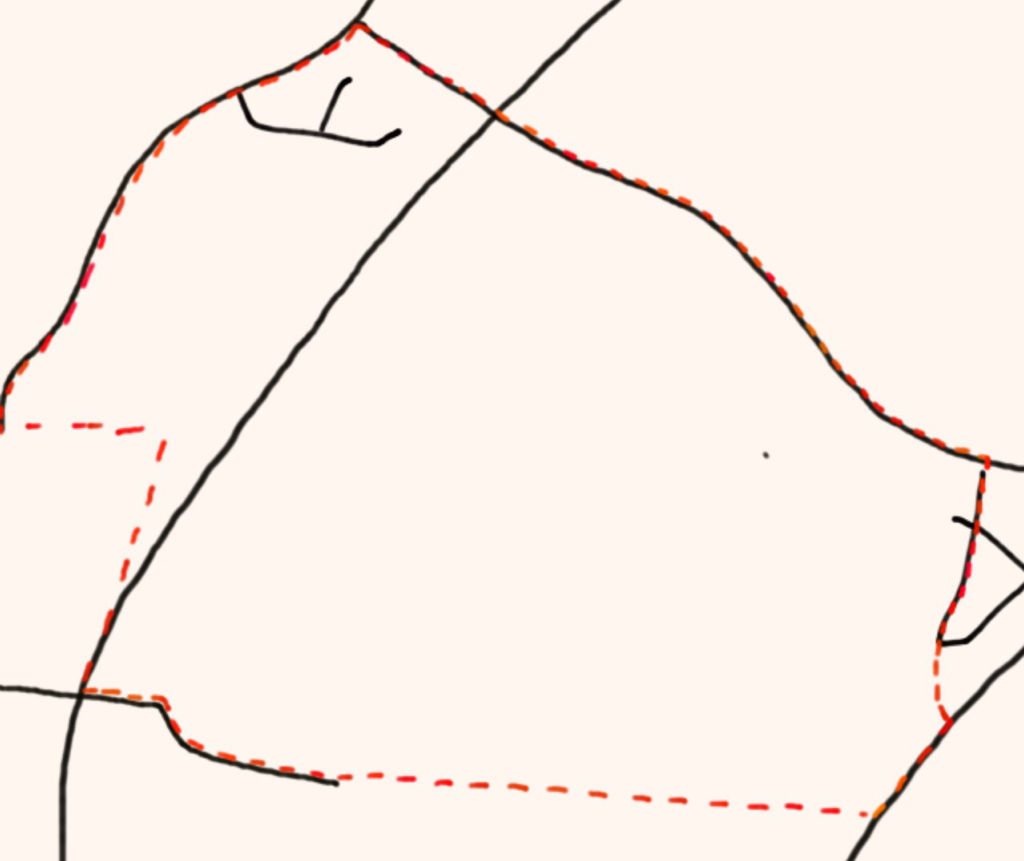 Task 3: Draw your CBD and a residential area.
Construct sketches of how you imagine your city will look like. Annotate your images with important features of your city (style of building, tree-lined streets, community spaces, retail spaces, etc). Task 4: Create a prospectus Write a report that addresses how you have created a "liveable" city. Refer to the questions outlined in Task 1 to help you structure your response. Scan your city plan and CBD and residential area drawings and include them in your prospectus. tI have recently been running a few sessions with high schools to help with programming for the new NSW Geography syllabus incorporating the Australian Curriculum. As the year is coming to a close, and I am running out of time, I thought I would just make this available in case people want to share it or go through it with their faculties. This might be a useful resource to use for one of the last Staff Development Days or your first day back (take note Social Science/HSIE Head Teachers). If you are at a Department of Education school you can find this course on MyPL by searching for its title: Introduction to the 7-10 Geography syllabus: - Session 1 - the basic framework. Download the file to use with your staff (edit/change whatever you like).
Why teach Geography? Given the number of teachers who teach Geography in 7-10, that aren't specifically trained in it (or perhaps interested in it), I think it is worth starting any discussion with "Why teach Geography?". Ask teachers to consider the importance of examining and promoting this subject to the individual, the community and the world. If you can encourage the staff that aren't all that engaged in Geography to develop an interest in it, then they will be much more successful in teaching the subject and engaging their students. Geography in Primary - impacts on your teaching in high school For the first time, students will be studying Geography in primary school as a stand alone subject. Most Year 7 units that are currently taught begin with "What is Geography", "What is a Geography tool/skill?", "What are the features of maps", etc. Once the new syllabus is fully implemented, students will have already covered this introductory information in primary school. So this is the first thing that will need to go. In primary school the students will have already been introduced to geographical concepts, tools, and the geographical inquiry process. Keep in mind, this may not be the case for 2017 for all students, but from 2018, you should expect that students have this prior knowledge. Obviously, do some pretesting to get an idea of the depth of students' knowledge. Components of the syllabus Continuums of learning This syllabus introduces a series of continuums of learning for students. There are three continuums: Geographical concepts, Inquiry skills and Geographical tools. These provide you with a snapshot of the learning the takes place in each stage from Early Stage 1 to Stage 5. In the previous syllabus students followed a Research Action Plan. This has been simplified in the new syllabus to a Geographical Inquiry. Students undertake a Geographical Inquiry from Early Stage 1 up to Stage 5, but as students move through the stages the process becomes more complex. However, regardless of the complexity, there are three main stages to a Geographical Inquiry - Acquiring geographical information, processing geographical information and communicating geographical information. Geographical Tools include five main categories - Maps, Fieldwork, Graphs and Statistics, Spatial Technologies and Visual Representations. In the previous syllabus, these were generally what we referred to as skills. There has been some shifting of skills/tools from the previous syllabus and the addition of some new tools. The biggest difference is in Stage 5, where in Spatial Technologies students will be expected to be proficient in virtual maps, satellite maps, global positioning systems (GPS), geographic information systems (GIS), remote sensing data and augmented reality. If this is something which staff find a little daunting, keep in mind that you could delay implementing a couple of these items until 2018, Year 10 to allow a little bit of extra time for upskilling. This way you would still be covering them for the students in Stage 5. Once teaching feeling comfortable with their own skills levels and knowledge, you might then look at shifting it earlier in the stage. Outcomes One of a major differences bewteen the new NSW syllabus and the Australian Curriculum is the integration of outcomes, which in NSW we are used to. Outcomes decribe the essential learning. You MUST cover outcomes. These must be the starting points for designing your lessons, excursions, project based learning, problem based learning, assessments and reports. There should really be a huge arrow pointing at the outcomes for each topic saying "Start here!!". Key Inquiry Questions The new NSW syllabus has included key inquiry questions which drive student learning. This inquiry strand runs parallel to the development of content knowledge. Students will use their inquiry skills (see the continuum discussed above) and geographical tools to undertake geographical inquiries. This is an opportunity for students to explore problematic knowledge, and to develop critical and creative thinking, ethical understanding, personal and social capability (some of the Learning Across the Curriculum areas), Stage statements: The stage statements provide a description of what we want student to have acheived by the end of the stage. Stage statements can be used as a reference point for student acheivement. They may also be useful in making judgements about individual students in terms of decisions related to Learing and Support, Life Skills or opportunities for acceleration. If the student is performing well above or below the stage statement this will indicate that adjustments, modifications or a different course is required. Content The content is the detailed information to be covered in each topic. Each of the dot points is compulsory, while the dash points are suggested ways that you may choose to approach the dot point (not mandatory). You may come up with other ways to approach the dot point if you choose. Life Skills A specific Geography Life Skills course has been provided which could run parallel to a mainstream class. Topics, outcomes and content are similar. This will make it easier to implement if you have one Life Skills students in a mainstream class, as you will be able to use some of the basic information prepared for your mainstream class and heavily modify it, rather than create resources on a completely different topic as was the case with the provious Life Skills course. Icons and symbols The content has a series of codes and symbols throughout. The Australian Curriculum Codes are indicated after the dot points (e.g. ACHGK048). Generally teachers don't really need to worry about these, as the NSW syllabus is the absolute authority. However, if you are looking for resources shared from around Australia, it may be useful to know the Australian Curriculum code. Icons and abbreviations are also used to indicate appropriate content where tools and Learning Across the Curriculum can be covered. Guest blogger: Bruce BarclayThe recently released stage six draft modern history syllabus fails to clearly articulate a vision for the study of modern history in a globalised world. In its previous incarnation, the stage six syllabus at least paid lip service to areas of modern history which were not European in nature, i.e. India as one option. This final draft does not reflect the four options which were tabled to teachers who took the time to provide feedback to BOSTES previously. Teachers of this subject have been ignored with the release of the final draft.
The National Study and Peace and Conflict topic areas have been left relatively unscathed. However the inclusion of Iran into the national study topic area replaces India which is a lost opportunity. Similarly, the Peace and Conflict topic retains the main options, with the inclusion of Conflict in the Gulf 1991-2011, which replaces the UN as Peacekeeper. Essentially these two areas of study have escaped political influence. One of the real, if not the most problematic areas, is the core topic. Instead of utilising one of the options tabled at the consultation process, BOSTES has obviously bowed to political pressure and ignored the recommendations of the majority of teachers. World War One was a topic which although staid, at least had the advantage of being politically neutral and allowed teachers to engage in different national studies with no disadvantage to its students. For example a teacher of the USSR topic can build on students’ knowledge of the World War One topic. However as it stands, the core topic is Nazi Germany 1933-39 and teachers have to cover 9 detailed dot points taking up 60% of course time. To further compound the problem, teachers then need to teach another dictator, e.g. Pol Pot for 30% of the course. This begs the question: why is Nazi Germany deemed the most important topic for the core? Compounding the obvious bias, is that instead of removing Nazi Germany from the National Study it keeps Nazi Germany, but focuses on 1914-33. Clearly any teacher with half a brain will teach the German National Study first, then the Core/Nazi topic and if you haven’t got your fix of Nazi German history, you could finish with the European Conflict option for the Peace and Conflict topic. Already roughly 70% of the state teaches the Nazi option for the National Study so BOSTES wants the rest of the state to follow suit. As one person at the BOSTES consultation meeting at Hurstville remarked “That’s the end of the Soviet Union in every sense”. The USSR and for that matter the other options have been "relegated to the dustbin of history," to quote Goebbels, I mean Trotsky. It’s already working! Unlike the Ancient History course, BOSTES have removed the Personality topic from Modern History and replaced it with Change in The Modern World. I actually thought there has been a lot of change in the modern world in the twentieth century - that is why students love studying Modern History. BOSTES wants teachers to not only teach a personality, e.g. Gorbachev but link it to a time frame of nearly 70 years - The Changing World Order 1945-2011. This option has 19 dot points to cover, plus an evaluation of Gorbachev during the Cold War period. Furthermore, as a hat tip to the old UN as Peacekeeper topic, teachers have to assess the role and impact of the UN as international peacekeeper in relation to one trouble spot in the world, e.g. Somalia. Evidently the old inconsistencies of comparability between the ancient and modern course remain but are amplified, further alienating modern history teachers. If I was a student and had equal interest in modern and ancient history I would choose ancient for ease of content and variety. I hope that someone more technically adept than myself will be able to create a parody of the modern syllabus using snippets from The Downfall movie on youtube. I won’t even start on the exam specifications. I attended the Department of Education’s STEM Showcase (see the tweet feed at #STEMShowcase). In case you’ve been living under a rock – STEM is Science, Technology, Engineering and Maths. STEM is clearly a movement that is gaining momentum, and my question is where does geography fit into this? Or History? Or Commerce? I have been trying to think of a new acronym to get us in on this movement. If you have any ideas, please let me know. What occurred to me is how many of these STEM projects have very obvious crossovers with humanities subjects, particularly geography. This post will look at a few of the presentations that I saw today and some ideas of how humanities subjects could also be included.
Baulkham Hills High School – Weather TECH Students created a STEM project involving the construction of a weather station. This involved a design process, coding of the equipment, manufacturing the equipment with a 3D printer, and collecting and analysing weather data. In the Science faculty, this was undertaken as part of a student research project. In TAS, students developed skills in using CAD and CAM software and Arduino to design, code and create the equipment. In Maths, students' skills were developed in analysing and presenting the vast amount of weather data collected. Students (and teachers) successfully created a working model with equipment collecting weather data every second. The real world applications to agriculture were emphasised. In the new NSW Geography syllabus the WeatherTECH project would fit easily within the Water In the World topic, particularly Water resources and the Water cycle. It also addresses fieldwork requirements – using weather instruments. Examine the WeatherTECH project site. Bellingen High School - Survive the Shake The topic of this STEM project was earthquake proof buildings. Students designed, produced and evaluated a multi-storey building with a small fooprint, which was specified. Students were provided with a design process to follow which provided a scaffold to follow during project. Students were required to use cheap materials such as straws, toothpicks, marshmallows, etc to create a model of their buildings. Building designs were tested on an earthquake shake table created by the teachers. In the Science faculty, the project tied into content related to earthquake size and magnitude, damage and destruction and prediction of quakes. In Maths it tied in with content related to geometry, 3D design shapes and budgets. The construction of the buildings and the design process involved the TAS faculty. In the new NSW Geography syllabus the Survive the Shake project would fit into Landforms and Landscapes, particularly Geomorphic hazards. This could easily incorporate the inquiry based learning skills in the syllabus. Examine the Survive the Shake project site. Riverside Girls High – Post-Earth Survival The girls at Riverside completed a STEM project examining the requirements to sustain life. Students explored the universe and designed a colony suitable for sustaining life on another planet. Students focused on: What do humans need to survive? The project used a design process from the TAS faculty and this was used to determine project milestones. TAS introduced the students to the tools they would need to complete the project such as Sketch Up, 3D printing, etc. Students brainstormed what it would be like if they were locked inside their house and had to stay there for 2-3 years. What would they need? What would they have to change? Students collected data on energy and water use in their own homes. From a Maths perspective students had to develop problem solving and reasoning skills, as well as data analysis. The project also incorporated the EcoMuve program from Harvard University. Assessment and presentation involved peer review and feedback. In the new NSW syllabus the Post-Earth Survival project would fit into Place and Liveability, particularly Influences and perceptions. This could also incorporate the inquiry based learning skills in the syllabus. Examine the Post-Earth Survival project site. Promoting Geography and boosting numbers A lot of time, effort and money is being spent on promoting STEM to our students. As Geography teachers, we are constantly looking for ways to promote our subject and boost senior numbers. There are plenty of ways to do this, but I think getting involved in STEM projects or at least other cross curriculum projects might be one idea that is worth a bit more consideration. BOSTES announced today that the new Elective 7-10 Geography syllabus is to be implemented in 2017. The remainder of this year is for familiarisation and planning.
Similarly to the new 7-10 Geography syllabus incorporating the Australian curriculum, it includes the Learning Across the Curriculum areas as well as the key geographical concepts of place, space, interconnections, environment, scale, sustainability and change. It includes a concepts continuum outlining which aspects of each concept should be covered in each stage. The geographical inquiry skills continuum and geographical tools continuum have also been included. The Elective course provides opportunity of geographical inquiry. The Stage statements for both Stage 4 and 5 have a whole paragraph emphasising the importance of geographical inquiry. There is an emphasis on problematic knowledge, with students required to investigate challenges, collect primary and secondary data, propose solutions and actions. Students are also required to investigate challenges from a range of different perspectives. Several of the topics allow for the exploration of an investigative study. Interestingly the Elective course is focused almost solely on outcomes and content. The Mandatory Geography course also has inquiry questions to guide each topic and a content focus, neither of which are present in the Elective syllabus. The topics in the new Elective Geography course are: - Physical Geography - Primary Production - Australia's Neighbours - Interactions and Patterns Along a Transcontinental Transect - Oceanography - Global Citizenship - Political Geography - School-developed Option A Life Skills course has been provided as part of the Elective course which aligns with topics of the mainstream course. This will make it manageable for teachers to deliver the Life Skills course within a mainstream classroom. Information is provided on reporting and to guide assessment in both the mainstream and Life Skills course. The syllabus and support documentation can be found on BOSTES: http://www.boardofstudies.nsw.edu.au/syllabus_sc/geography.html Lindsay Swan from the Board of Studies was a speaker at the recent NSW GTA Conference. He was there to speak about the implementation plans for the "new NSW Geography syllabus incorporating the Australian Curriculum". What a mouthful! The following details were confirmed: - Mandatory hours for Geography will remain the same as they are now - 100hrs in Stage 4 and 100hrs Stage 5. - Elective Geography will exist but will be changed (not sure of any other details here). - Planning is underway to begin the process of writing the new NSW syllabus. - It is likely that a team of syllabus writers will be established to write the documents for all upcoming HSIE subjects. - Writing and consultation is likely to take place in 2014. - Modification and approvals are likely to happen in 2014-5. - The new syllabus will contain outcomes and objectives. - The content elaborations as developed by ACARA will not be included. - Stage statements will be developed which will be linked to the Achievement Standards developed by ACARA. - The syllabus will continue to be based on stages not on years. - “Learning across the Curriculum” will be integrated throughout the syllabus so that teachers will not have to teach these as separate skills. - The Australian Curriculum content descriptions will be found in the new syllabus documents. - The Research Action Plan will be retained. - There will be no “learn tos” or “learn abouts”. - There will be internal choice/options. - The syllabus will not be published in a hard copy. You will only be able to access the syllabus online as an e-syllabus. - Schools must continue teaching the current NSW syllabus or risk issues with registration - Teachers will have approximately 12 months of familiarization once the documents have been released. - A possible implementation timeline is: o 7 and 9 in 2016 or 2017 o 8 and 10 2017 and 2018 - The BOS program builder is available to assist in program writing (but won’t be needed by Geography teachers for quite a while yet). The following were not confirmed: - Will there be an allocated budget to fund the writing of the new NSW syllabus for the Senior Geography course? - Will any of the writers for the Geography syllabus have Geography training or expertise? Implications:
From here on in I'm giving my own opinions and interpretation of the state of play. There are a number of issues that I think are important to be explored: NSW's delayed implementation compared to the rest of the country and compared to History, and the rewriting (or not?) of Senior Geography. The insistence of the Board of Studies to rewrite the Australian Curriculum for all of the subjects puts NSW behind the other states and territories. The benefit of this is that for the Phase 1 subjects (English, Science, History and Maths) NSW staff are in familiarisation mode while the other states are scrambling to write new content. When our Phase 1 teachers begin implementation next year for Years 7 and 9 there will already be a heap of resources available that have been developed by teachers from other states. The issue with this is that many of the online repositories of resources that have been developed (like ABC Splash, Scootle, etc) are linked specifically to the Australian Curriculum. NSW staff will need to find the resources and examine them through the lens of the new NSW syllabuses to see if they're relevant. Some may say this is not a big issue, but to me it is just another layer of conceptual matter to deal with on a day-to-day basis that the other states aren't worrying about. It is highly likely that NSW teachers will find great resources that are just not quite right because of the NSW re-write. This will continue to happen in NSW when we finally get round to implementing Geography. I'm still not really clear on why NSW is rewriting the Australian Curriculum. Wouldn't it be great to be part of a national initiative where we are all sharing resources and discussing pedagogy together? Instead, in NSW we are saying, "Well, I like this bit, but we can do so much better here...", or, "I don't like this bit, let's do it this way...". Isn't the whole point of having a national curriculum that we work together and do the same thing? I really think I'm missing something and to me it all feels a little elitist. I understand that teachers in NSW are used to doing things in a certain way (particularly the emphasis on outcomes), but I'd like to think that we're all smart enough and adaptable enough to teach and interpret whatever we're given. I also feel like we're really letting down the team. We should be pumping out resources for the other states to use. Given that there are other states who have not taught Geography as a separate subject before, NSW should be leading the charge and offering up everything we have. A constant discussion on online Geography groups, at events and in staff rooms is how we can boost Senior Geography numbers. People are constantly coming up with amazing ideas to engage students and try to encourage a greater take up in senior school. For me I think one of the biggest issues is the constant comparison to History (sorry historians, no offence). The implementation of Geography looks like it will be at least 2 years behind History. Clearly this goes back to the original federal decision to have History in Phase 1 and Geography in Phase 2, but the ACARA draft for Geography has been out for ages. Is it really not possible to speed the whole re-writing process up a bit? Geography clearly has an image problem. She is like the ugly step-sister to History. A delay in the implementation of the Australian Curriculum does nothing to improve matters. Neither does a lack of commitment to re-write the Senior Geography syllabus. |
Categories
All
Archives
May 2024
|
||||||||||||||
